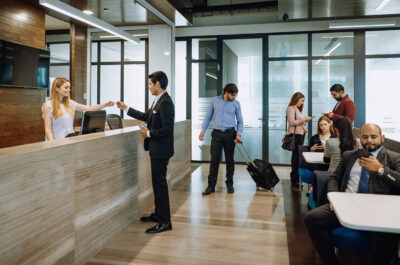Grant Strudwick, Regional Security Director, Asia-Pacific, International SOS and Control Risks talks to TravelDailyNews about International SOS’s activity in the area of Nepal after the devastating earthquake and what can tourists do to protect themselves in Nepal, either from aftershocks or from a future epidemic due to bad health conditions.
Travel Daily News: Do we have a specific number of tourists that were in the area at the time of the earthquake and how many are dead / injured?
Grant Strudwick: We know that more than 5,000 people have died in the earthquake, and up to 10,000 have been injured. It is also estimated that around 300,000 tourists were in Nepal at the time of the earthquake.
A number of aftershocks have taken place in the region, the strongest registering 6.7 in magnitude, around 40 miles east of Kathmandu. Further strong aftershocks are still possible, posing a threat to lives and buildings.
TDN: What is the situation at the International Airport in Kathmandu and how easy or how difficult is it for people to leave the country?
G.S.: Local authorities worked to open Kathmandu’s Tribhuvan International Airport within hours of the earthquake. As of 30 April, commercial flights continue to operate, however there have been some significant delays and some cancellations. There have also been some short-duration suspensions due to aftershocks. There is a high demand for seats on commercial aircraft. Charter flights require clearance, currently granted on a limited basis and often requiring diplomatic approval. Many tourists including British nationals have been repatriated via government-run flights.
It is more difficult for people located outside Kathmandu due to road and airport closures. While the Tribhuvan and Prithvi highways, connecting Kathmandu with the Indian border and Pokhara, respectively, are open, we advise that overland journeys should be avoided if possible. The roads are heavily congested with buses, military and aid vehicles and adverse weather and small-scale landslides can make travel risky. We are advising that tourists stand-fast and wait until they can travel safely by air.
TDN: What activity is International SOS undertaking in the area?
G.S.: Together with Control Risks, the world’s leading global business risk consultancy, we have sent a joint medical and security team to Kathmandu to help our clients including hundreds of travellers, NGOs and expatriates. The focus of our efforts has been on providing evacuation support, helping individuals to get to Kathmandu airport and out of the country. Our first tasks included going to hospitals to locate clients that may have been injured and meeting with embassy officials to find out how governments are supporting their citizens. At first privately-owned helicopters were requisitioned by the authorities in support of the rescue efforts, when these became available, we were able transport our clients from the Everest-area in Lukla back to Kathmandu.
TDN: What can tourists do to protect themselves in Nepal, either from aftershocks or from a future epidemic due to bad health conditions?
G.S.: The immediate health risks are safety, shelter, disease and sustenance-related. Many healthcare facilities in the worst affected areas are severely damaged. Precautions should be taken with regards to food and water safety. Consider all water systems contaminated; the risk of diarrhoeal illnesses including cholera is greatly increased. We advise using personal water purification systems for protection. Additionally, Japanese encephalitis, dengue fever and malaria (at lower-attitudes only) are present in Nepal. We advise that travellers should take steps to prevent mosquito bites, use malaria preventive medications and mosquito nets when sleeping. It is also crucial that people follow instructions from the emergency and disaster response services.
International SOS and Control Risks alliance brings together two of the world’s leading medical and security specialists, International SOS and Control Risks. They combined resources and expertise are well placed to meet the customers’ growing need for integrated travel security risk services. Their solutions ensure that mobile employees are safe and productive and help employers with their duty of care obligations. 50 dedicated experts, located across the globe with access to over 200 dedicated travel security experts through 27 regional assistance centres and a partner network of over 700 accredited providers, produce global travel security information and analysis 24/7. They also provide travel security training, preventative travel assessment, support with the development of travel security risk policies, evacuation plans and the latest technology to enable clients to track and communicate with their mobile employees.
Grant Strudwick is Regional Security Director, Asia-Pacific, International SOS and Control Risks.
Theodore is the Co-Founder and Managing Editor of TravelDailyNews Media Network; his responsibilities include business development and planning for TravelDailyNews long-term opportunities.












































































































































































































